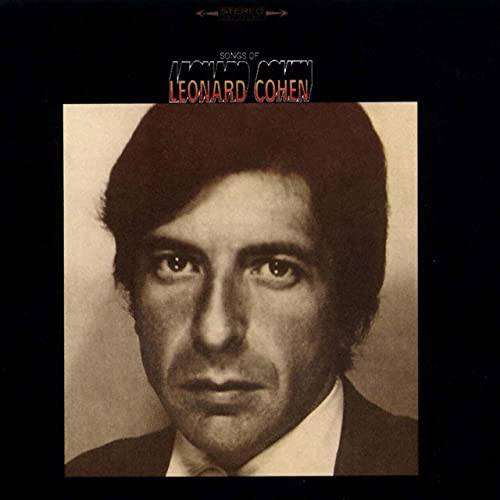
Leonard Cohen, with his deep and melancholic voice, has captivated hearts and minds around the world. Known for his profound and emotionally charged lyrics, Cohen uniquely combined poetry, music, and spirituality in a way that continues to resonate in the contemporary musical landscape.
Born in Montreal in 1934, Cohen was first recognized as a poet and novelist. His transition to music in the 1960s marked the beginning of a rich and varied musical career. His early works, like “Songs of Leonard Cohen”, revolutionized folk music with introspective lyrics and captivating melodies.
“There is a crack in everything, that's how the light gets in.” This line from his song “Anthem” encapsulates Cohen's philosophy: finding beauty in imperfection.
“Music is the emotional way of thinking.” Cohen always saw music as a means to express complex feelings, often inexpressible in words alone.
Cohen rubbed shoulders with many famous artists and writers throughout his life. Anecdotes of his encounters with figures like Janis Joplin and Bob Dylan testify to the mutual influence and respect they shared.
The relationship between Leonard Cohen and Janis Joplin
The relationship between Leonard Cohen and Janis Joplin was brief but memorable, and it is best known through Cohen's song “Chelsea Hotel #2”. This song, released in 1974 on his album “New Skin for the Old Ceremony”, describes an intimate encounter between Cohen and Joplin at the Chelsea Hotel in New York.
The Chelsea Hotel was a famous gathering place for artists, musicians, and writers in the 1960s and 1970s. In “Chelsea Hotel #2”, Cohen recounts a sexual encounter with a woman whom he later revealed to be Janis Joplin. The song is candid and melancholic, reflecting the fleeting nature of their liaison.
Cohen described Joplin as a straightforward and direct woman, and their interaction as a moment of human connection in an often superficial and disconnected environment. He expressed respect and affection for Joplin in his interviews, highlighting their meeting as a poignant memory in his life.
Until his death in 2016, Leonard Cohen continued to create, exploring new musical and poetic territories. His last album, “You Want It Darker,” released shortly before his death, is a testament to his ability to evolve and remain relevant, regardless of the era.
The album : Songs of Leonard Cohen
Released in 1968, “Songs of Leonard Cohen” is not just Leonard Cohen's first album, but also a cornerstone of contemporary folk music. With iconic tracks like “Suzanne” and “So Long, Marianne”, Cohen established a distinctive style from the beginning, combining lyrical poetry and haunting melodies.
“I wanted my voice to be an instrument among others, but it ended up dominating.”
Leonard Cohen on creating the album
Cohen, already a recognized poet and writer before venturing into music, brought a literary depth to his songs. “Suzanne” speaks of a real-life encounter with Suzanne Verdal, while “So Long, Marianne” is a poignant farewell to Marianne Ihlen, a long-time muse of Cohen.
Produced by John Simon, the album is characterized by its instrumental simplicity, highlighting Cohen's voice and lyrics. This minimalist approach allowed Cohen's poetry to shine, creating a unique intimacy with the listener.
“There is a crack in everything, that's how the light gets in.” Though this quote comes from a later song (“Anthem”), it encapsulates Cohen's aesthetic of finding beauty and truth in imperfection.
The album remains a classic, an introspective exploration of love, loss, and spiritual quest.
The Song : Suzanne
“Suzanne”, one of Leonard Cohen's most famous songs, is a captivating poetic work that has left a mark on the history of folk music.
The song was inspired by Suzanne Verdal, the wife of a friend of Cohen in Montreal. Cohen and Verdal shared a platonic relationship, spending long hours together talking and sharing moments of connection. The song captures the essence of this relationship, painting a romantic and mystical portrait of Suzanne.
The lyrics of “Suzanne” invite listeners to explore themes of love, spirituality, and freedom. The song begins with a detailed description of Suzanne, drawing us into her world where reality and imagination blur. Cohen speaks of the Saint Lawrence River and Notre-Dame, creating a powerful link between earthly love and spiritual quest.
Cohen wrote “Suzanne” at a time when he was still primarily a poet and novelist. Cohen's transition from literature to music was marked by this song, which established his unique style of musical storytelling.
Leonard Cohen's song “Suzanne” has been covered by many artists, each bringing their own unique touch to this timeless melody. Here are some of the most notable covers:
Judy Collins (1966): Before Cohen even released his own recording, Judy Collins performed a delicate and emotive version of “Suzanne”, significantly contributing to the song's popularization.
Nina Simone (1969): Nina Simone offered a deep and soulful interpretation of “Suzanne”. Her emotionally charged version became an iconic performance that highlights the lyrical power of the song.
Neil Diamond (1971): In his album “Stones”, Neil Diamond included a version of “Suzanne” characterized by his warm voice and rich musical arrangement.
Françoise Hardy (1970): French singer Françoise Hardy recorded a French version of “Suzanne”, bringing a European and introspective touch to the song.
Peter Gabriel (2011): Peter Gabriel covered “Suzanne” on his covers album “Scratch My Back”, offering a minimalist and emotionally poignant interpretation.
Where to listen to Songs of Leonard Cohen?
- Listen to Songs of Leonard Cohen on Spotify
- Listen to Songs of Leonard Cohen on Deezer
- Listen to Leonard Cohen on Youtube